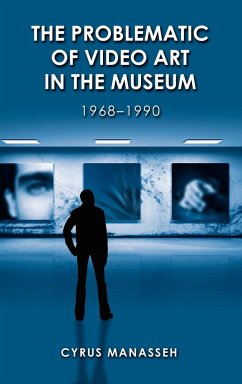Throughout the mid-1970s until the early 1990s, video art as vehicles for social, cultural, and political analysis were prominent within global museum based contemporary art exhibitions. For many, video art during this period stood for contemporary art. Yet from the outset, video art's incorporation into art museums has brought about specific problems in relation to its acquisition and exhibition. This book analyses, discusses, and evaluates the problematic nature and form of video art within four major contemporary art museums--the Museum of Modern Art (MoMA) in New York, the Georges Pompidou National Centre of Art and Culture in Paris, the Tate Gallery in London, and the Art Gallery of New South Wales (AGNSW) in Sydney. In this book, the author discusses how museum structures were redefined over a twenty-two year period in specific relation to the impetus of video art and contends that analogue video art would be instrumental in the evolution of the contemporary art museum. By addressing some of the problems that analogue video art presented to those museums under discussion, this study penetratingly reveals how video art challenged institutional structures and had demanded more flexible viewing environments from those structures. It first defines the classical museum structure established by the Louvre Museum in Paris during the 19th century and then examines the transformation from this museum structure to the modern model through the initiatives of the New York Metropolitan Museum to MoMA in New York. MoMA was the first major museum to exhibit analogue video art in a concerted fashion, and this would establish a pattern of acquisition and exhibition that became influential for other global institutions to replicate. In this book, MoMA's exhibition and acquisition activities are analysed and contrasted with the Centre Pompidou, the Tate Gallery, and the AGNSW in order to define a lineage of development in relation to video art. Extremely well researched and well written, this book covers an exhaustive, substantive, and relevant range of issues. These issues include video art (its origin, significance, significant movements, institutional challenges, and relationship to television), the establishment of the museum (its patronage and curatorial strategy) from the Louvre to MoMA, the relationship of MoMA to the Metropolitan Museum of Art, a comparative analysis of three museums in three countries on three continents, a close examination of video art exhibition, a closer look at three seminal video artists, and, finally, a critical overview of video art and its future exhibition. This unique book also covers an important period in the genesis of video art and its presentation within significant national and global cultural institutions. Those cultural institutions not only influence a meaningful part of the cultural life of four unique countries but also represent the cultural forces emerging in capital cities on three continents. By itself, this sort of geographic and institutional breadth challenges any previous study on the subject. This book successfully provides a historical explanation for the museum/gallery's relationship to video art from its emergence in the gallery to the beginnings of its acceptance as a global art phenomenon. Several prominent video artists are examined in relation to the challenges they would present to the institutionalised framework of the modern art museum and the discursive field surrounding their practice. In addition, the book contains a theoretical discussion of the problems related to video art imagery with the period of High Modernism; it examines the patterns of acquisition and exhibition, and presents an analysis of global exchange between four distinct major contemporary art institutions. The Problematic of Video Art in the Museum, 1968-1990 is an important book for all art history and museum collections.








